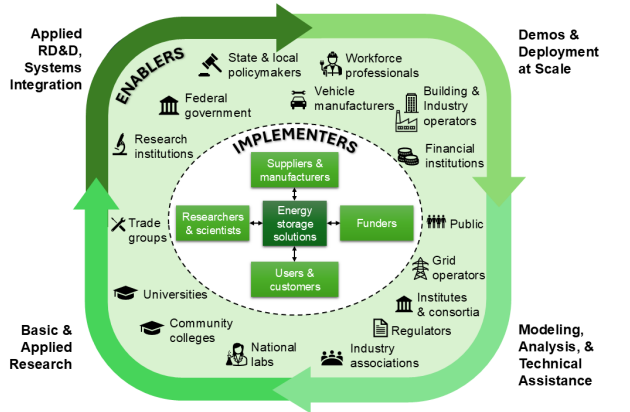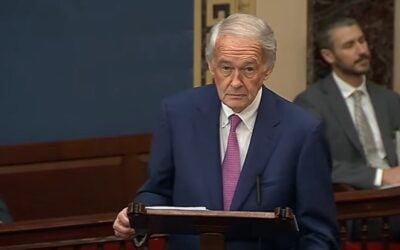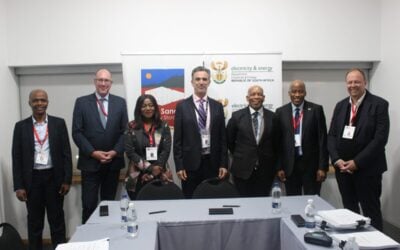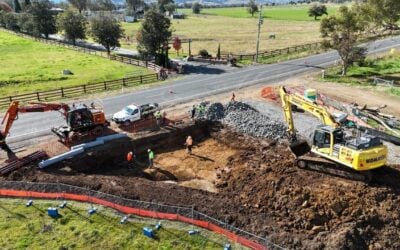
The US Department of Energy (DOE) has released its draft Energy Storage Strategy and Roadmap (SRM), a plan providing strategic direction and opportunities to optimise DOE’s energy storage investments ahead of the incoming Trump administration.
The president-elect has selected oil industry executive Chris Wright to replace Jennifer Granholm as the US energy secretary. Wright has no political experience and famously said there is no climate crisis or an energy transition.
Enjoy 12 months of exclusive analysis
- Regular insight and analysis of the industry’s biggest developments
- In-depth interviews with the industry’s leading figures
- Annual digital subscription to the PV Tech Power journal
- Discounts on Solar Media’s portfolio of events, in-person and virtual
This would come as a surprise to the DOE and its Loan Programs Office (LPO), which has announced over US$70 billion in conditional commitment and closed loans for projects supporting innovative energy and supply chain technology for clean energy, financing for the deployment of clean energy technologies, and reinvestment in existing energy infrastructure.
That said, despite those perhaps worrying signs, the DOE’s current programme to guide the accelerated ‘development, commercialisation, and utilisation of next-generation energy storage technologies,’ the Energy Storage Grand Challenge roadmap, was released during the tail-end of the previous Trump presidency.
Some sources Energy-Storage.news has spoken to have said that they expect energy storage to be a continued focus of political support, not least of all because it’s good business and many investments in battery manufacturing in particular are in traditionally Republican states.
Earlier this month, Energy-Storage.news reported on the US$56.02 billion in conditional commitments and closed loans done by the DOE’s LPO. Since then, conditional commitments have been announced for a thermal energy startup, as well as utilities in California, Wisconsin and Puerto Rico, totalling over US$73 billion.
The DOE’s 2024 SRM builds on the Energy Storage Grand Challenge (ESGC) 2020 roadmap, outlining actions for what the SRM calls a strategic, beneficial and timely storage deployment. The SRM cites the underlying motivation for investment in energy storage as ensuring “that the American people will have the resources needed, when needed.”
The DOE will use three strategic objectives to guide its storage activities:
“1. To facilitate safe, beneficial, and timely deployment of energy storage technologies and accelerate the development of new technologies that address current and emerging consumer needs.
2. To empower decision-makers by providing unbiased and fact-based information and analysis to enhance their energy storage-related investments, policies, and goals.
3. To leverage DOE’s global leadership in the energy storage community and accelerate the path from innovation to commercialisation that benefits all Americans by effective and durable engagement throughout the innovation ecosystem.”
The SRM continues, laying out eight strategies to support these objectives:
“1. Make long-term investments in fundamental and responsible energy storage technology research.
2. Target strategic, high-impact use cases for energy storage technologies.
3. Improve energy storage implementation cost assessments.
4. Inform the value proposition through development of valuation assessments and compensation mechanisms.
5. Enhance safety and reliability of energy storage technologies.
6. Advance equitable access to energy storage technologies to meet existing and emerging community needs.
7. Strengthen and enable reliable, resilient, affordable, diverse, sustainable, and secure domestic energy storage supply chains, including critical minerals and materials and a circular economy, that helps expand American manufacturing and jobs.
8. Collaborate across DOE programs, mission areas, and external to DOE.”
These strategies are a part of what the DOE calls “the ecosystem around energy storage.” The provided figure illustrates this “ecosystem.”

The LPO director, Jigar Shah, spoke previously on the Biden administration’s Inflation Reduction Act, sparking a more “aggressive” approach to climate change from the US. Wright’s appointment is not confirmed, but it would almost certainly lead to changes in activity from the LPO.
While the future of the DOE’s LPO remains uncertain, the SRM shows that the department is placing a heavy focus on energy storage research and innovation and providing facts about the technology that could inform its future in the energy market.
The DOE is asking for comment from stakeholders to inform its energy storage SRM through a formal Notice of Availability (NOA).






